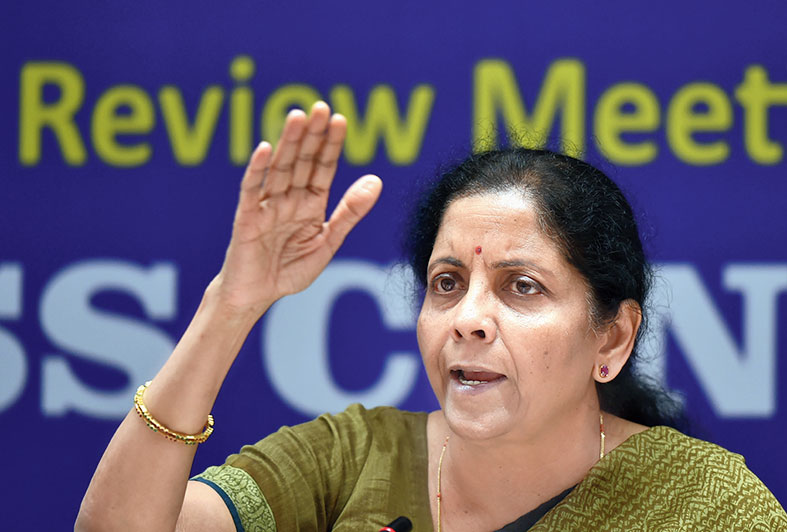The Narendra Modi government on Thursday jumped onto the bandwagon of loan melas — a throwback to the irresponsible, indiscriminate lending policy adopted by the Congress administration in the early 1980s — in a desperate attempt to revive a stuttering economy.
After a brainstorming meeting with the chief executives of public sector banks, finance minister Nirmala Sitharaman told reporters that the banks would hold meetings with representatives of non-banking finance companies (NBFCs) and prospective clients in 400 districts across the country to ensure that anyone who seeks a loan gets it.
She said 200 districts would be covered in the first phase till September 29 and the next 200 districts would hold similar meetings from October 10 to 15.
“The banks readily agreed to the proposal that we made during our review meeting today,” Sitharaman said.
Anurag Thakur, minister of state for finance and corporate affairs, will look into the details of the implementation of the credit melas and would involve ministers and local MPs.
India has 731 districts, so the loan jamboree will cover more than half the country.
Not since Congress minister of state for finance Janardhan Poojary launched his infamous loan melas in the early 1980s has anyone seen anything similar on such a massive scale.
“This will be a public affair, conducted under large shamianas and in open places, to send out the message that the banks are ready to lend money to anyone who needs it,” Sitharaman said.
The loan melas will cover the so-called RAM (retail customer, agriculture and micro, small and medium enterprises) sector, she said.
The banks have been asked to organise these large public gatherings, to be attended by NBFCs and retail customers. Loans will also be given to people looking for home loans and vehicle financing.
Sitharaman did not say whether there would be a cap on the size of the loans. The government has been trying to push the envelope on affordable housing. At present, loans of up to Rs 20 lakh to individuals to buy or build one dwelling unit per family are classified as priority-sector lending as long as the cost of the house does not exceed Rs 25 lakh.
The real estate and automobile sectors have been suffering the worst effects of the economic downturn and the loan mela programme is a crude attempt to pump-prime the economy.
The NBFCs — the principal channel for providing loans to small businesses in the country — have been facing a credit crunch after banks turned off the cash spigots following a crisis that enveloped the Infrastructure Leasing and Financial Services last September and quickly hit a couple of other entities.
Sitharaman said the banks had already identified and tied up with the NBFCs through which they would shovel loans into the economy. The banks will also scout for new alliances with NBFCs.
“The banks have gone ahead with planning and have identified the NBFCs to whom they can lend straightaway. Some have received it (loans) in the past too while the others are in the pipeline,” she added.
The banks will try and encourage their existing customers to bring newer prospective borrowers to these loan melas, she said, adding: “For every one existing customer, banks will have to bring five fresh customers for loans.”
She said the idea was to ensure maximum credit disbursal during the festive season.
In another major step, the government has decided that banks would not classify the stressed assets in the micro, small and medium enterprises (MSME) sector as non-performing assets on their books, freeing them from the obligation to make huge provisions under the Reserve Bank of India’s prudential lending guidelines.
“Stressed assets of MSMEs will not be declared as NPA till March 31 next year…. Banks will have to work it out,” Sitharaman said.
Data sourced from the Reserve Bank of India show that outstanding loans to the MSME sector totalled Rs 15.14 lakh crore as of July 19 this year, a 5.6 per cent increase over the year-ago period.
A media note issued by the finance ministry after the meeting said loan disbursements to the MSME sector were Rs 11.83 lakh crore in 2018-19 against Rs 8.53 lakh crore in the previous fiscal.
Banks had also disbursed home loans worth Rs 2.19 lakh crore in 2018-19 against Rs 1.81 lakh crore in 2017-18, the note added.











